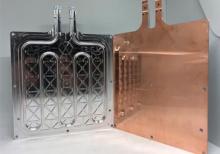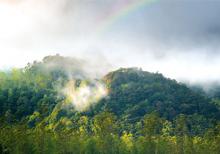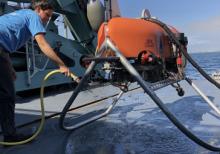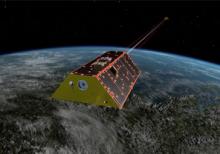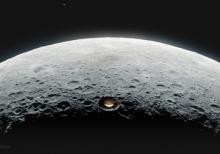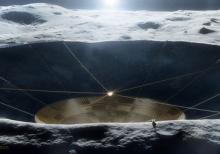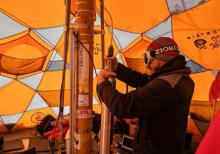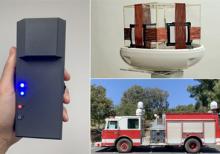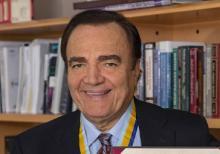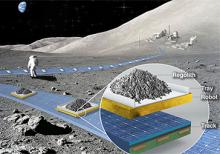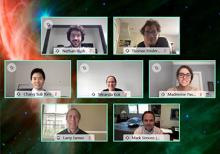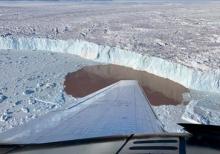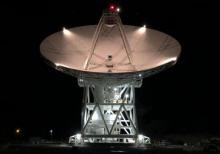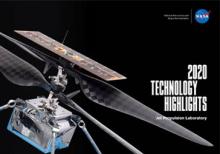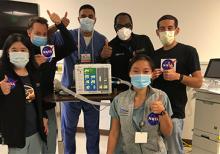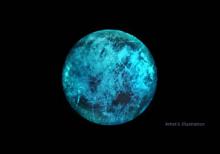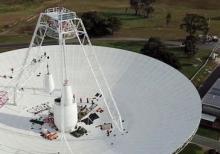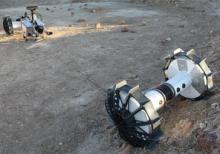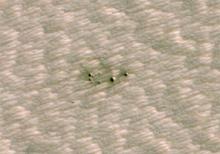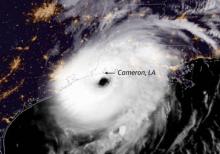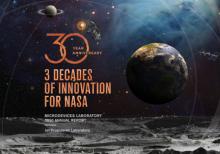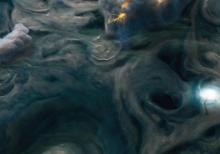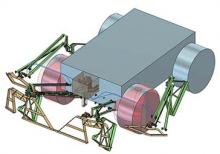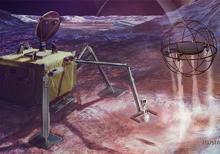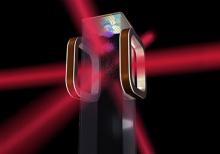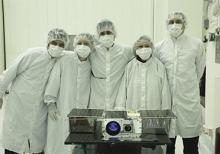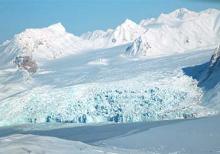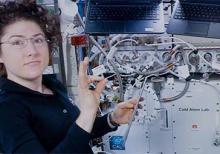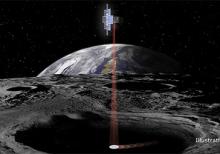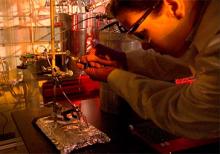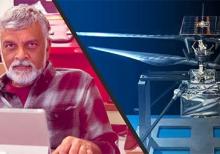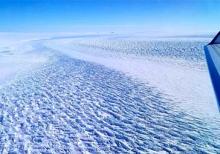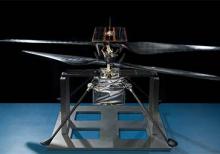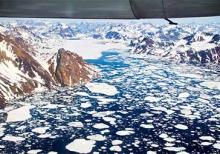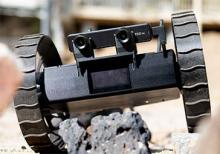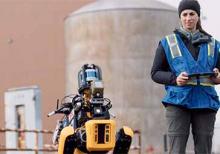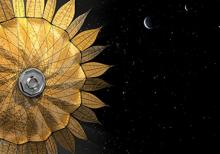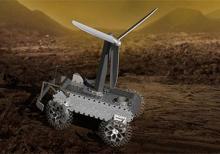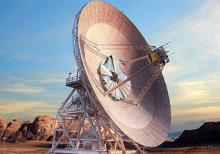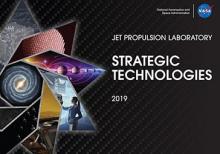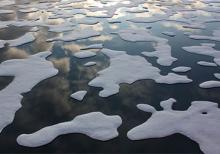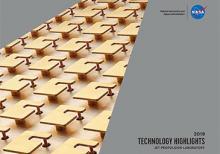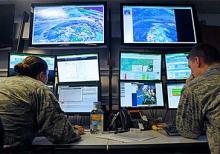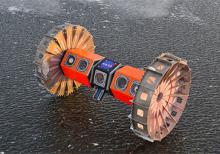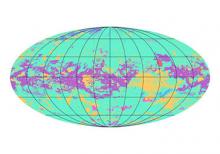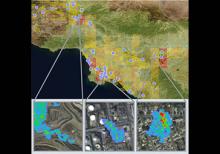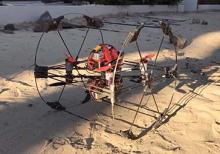The Media Relations Office at JPL is responsible for issuing press releases and hosting media events. As an institution, discussing new discoveries with the public is key to JPL's success as an institution. Below are selected press releases from JPL about new advances in many research fields.
News Board
A manufacturing innovation that has applications for NASA spacecraft is being transferred to the private sector to support a variety of industries here on Earth.
NASA scientists have studied 17 years of gravity observations of our planet to understand how the global water cycle is changing.
Terrain-relative navigation helped Perseverance land – and Ingenuity fly – autonomously on Mars. Now it’s time to test a similar system while exploring another frontier.
The AIAA is honoring Jet Propulsion Laboratory Director Watkins and Autonomous Systems Manager Gross, plus two European partners, for work on the GRACE missions.
The early-stage NASA concept could see robots hang wire mesh in a crater on the Moon’s far side, creating a radio telescope to help probe the dawn of the universe.
JPL’s Lunar Crater Radio Telescope advanced concept is among the projects that have been selected for further research and development.
A technique for scanning Mars rocks for microscopic fossils of ancient life is also being developed to hunt for microbes in the deep ice of Enceladus, Titan, and Europa.
A unique positioning technology is being developed to pinpoint firefighters inside buildings where other positioning technologies fail.
Fred Hadaegh is honored for his pioneering work in autonomous guidance, navigation, and spacecraft control systems.
Four advanced space concepts from NASA’s Jet Propulsion Laboratory have been selected to receive grants for further research and development.
Winners of the annual 2020 Postdoc Research Day gave virtual seminars on their research and received plaques to commemorate the event.
Scientists with NASA’s Oceans Melting Greenland mission are probing deep below the island’s warming coastal waters to help us better predict the rising seas of the future.
The addition brings new capabilities to the network, which acts as an interplanetary switchboard, connecting us to missions at the Moon and far beyond.
A new document presents a diverse set of technology developments -- selected by the Chief Technologist out of many similar efforts at JPL -- that are essential for JPL’s continuing contribution to NASA’s future success.
NASA's technology is at the forefront of space exploration, but it can also be applied here on Earth - from improving cellular networks to saving lives in the pandemic.
New lab experiments re-create the environment of Europa and find that the icy moon shines, even on its nightside. The effect is more than just a cool visual.
The only radio antenna that can command the 43-year-old spacecraft has been offline since March as it gets new hardware, but work is on track to wrap up in February.
Made of a pair of two-wheeled vehicles, NASA's DuAxel is designed to descend crater sides and near-vertical cliffs on the Moon, Mars, and beyond.
It's the first time machine learning has been used to find previously unknown craters on the Red Planet.
NASA research could help to improve forecasts of whether a hurricane will suddenly intensify, which could give people in its path more time to prepare.
The 2020 annual report from JPL’s Microdevices Laboratory recognizes 30 years of the team's contributions and achievements.
The spacecraft may have found where the colorless gas has been hiding on the solar system's biggest planetary inhabitant.
An overwhelming response to the competition will help advance the design of a mechanical rover concept that could one day explore the hellish surface of Venus.
SPARROW, a steam-powered robotic concept, could one day take giant leaps over some of the most hazardous terrains known (and unknown) in the solar system.
A new study describes how the mission became the first to make a fifth state of matter in Earth orbit, and the advantages of studying atoms in space.
About the size of a briefcase, the CubeSat was built to test new technologies but exceeded expectations by spotting a planet outside our solar system.
Continuous monitoring of glaciers and ice caps has provided unprecedented insights to global ice loss that could have serious socioeconomic impacts on some regions.
The Cold Atom Lab is using microgravity to learn about atoms and the quantum world, which could pave the way for new technologies in space and on the ground.
To support the next wave of human exploration, the Lunar Flashlight mission will look for potential ice hidden at the Moon's South Pole.
By mimicking rocky seafloor chimneys in the lab, scientists have produced new evidence that these features could have provided the right ingredients to kick-start life.
The Mars Helicopter is riding to the Red Planet this summer with NASA's Perseverance rover. The helicopter's chief engineer, Bob Balaram, shares the saga of how it came into being.
The shape of the ground beneath Denman Glacier, which is melting from the bottom up, makes it particularly vulnerable to the intrusion of seawater.
From lasers to rovers, the technology JPL develops for space often has unanticipated uses much closer to home.
The two regions have lost 6.4 trillion tons of ice in three decades; unabated, this rate of melting could cause flooding that affects hundreds of millions of people by 2100.
The upgraded Autonomous Pop-Up Flat Folding Explorer Robot, or A-PUFFER, is on a roll. The technology could find itself on a commercial lunar lander in the next few years.
Team CoSTAR, which includes NASA's JPL, Caltech and MIT engineers, placed first.
The JPL Strategic Technologies document identifies technology areas essential for JPL’s continuing contribution to NASA’s future success.
To survive the planet's intense heat and crushing surface pressure, the rover would need an obstacle-avoidance system unlike any other.
Robotic spacecraft will be able to communicate with the dish using radio waves and lasers.
The Jet Propulsion Laboratory is noteworthy for its sustained ability to accomplish challenging measurements and missions. JPL can continue to achieve its historical level of success only by developing and applying increasingly advanced technology to future missions.
Using 12 years of satellite data, NASA scientists have measured how the influx of cold, fresh water is affecting the Beaufort Gyre, a major Arctic current.
The mysterious material makes up most of the mass in the universe, yet scientists don't understand its fundamental properties. Hubble observations have provided new clues.
A new document presents a diverse set of technology developments -- selected by the Chief Technologist out of many similar efforts at JPL -- that are essential for JPL’s continuing contribution to NASA’s future success.
SMAP satellite soil moisture measurements now increase the accuracy of Army and Air Force weather forecasts and advisories.
A two-wheeled robot that can roll beneath sea ice will test its ability in the Antarctic Ocean. BRUIE is being developed by JPL for possible future missions to icy moons.
NASA scientists used data from different instruments to detail the array of geologic features across the giant moon of Saturn.
Naiad and Thalassa race around the ice giant in odd orbits seemingly to avoid each other.
NASA scientists flew over thousands of facilities in California to detect sources of concentrated methane plumes. Their findings could help the state lower emissions.
JPL robotics engineers are experimenting with Shapeshifter, a swarm of small robots that can morph into different vehicles to explore alien worlds.
Winners of the annual 2019 Postdoc Research Day gave seminars on their research and were presented with plaques to commemorate the event.
A manufacturing innovation that has applications for NASA spacecraft is being transferred to the private sector to support a variety of industries here on Earth.
NASA scientists have studied 17 years of gravity observations of our planet to understand how the global water cycle is changing.
Terrain-relative navigation helped Perseverance land – and Ingenuity fly – autonomously on Mars. Now it’s time to test a similar system while exploring another frontier.
The AIAA is honoring Jet Propulsion Laboratory Director Watkins and Autonomous Systems Manager Gross, plus two European partners, for work on the GRACE missions.
The early-stage NASA concept could see robots hang wire mesh in a crater on the Moon’s far side, creating a radio telescope to help probe the dawn of the universe.
JPL’s Lunar Crater Radio Telescope advanced concept is among the projects that have been selected for further research and development.
A technique for scanning Mars rocks for microscopic fossils of ancient life is also being developed to hunt for microbes in the deep ice of Enceladus, Titan, and Europa.
A unique positioning technology is being developed to pinpoint firefighters inside buildings where other positioning technologies fail.
Fred Hadaegh is honored for his pioneering work in autonomous guidance, navigation, and spacecraft control systems.
Four advanced space concepts from NASA’s Jet Propulsion Laboratory have been selected to receive grants for further research and development.
Winners of the annual 2020 Postdoc Research Day gave virtual seminars on their research and received plaques to commemorate the event.
Scientists with NASA’s Oceans Melting Greenland mission are probing deep below the island’s warming coastal waters to help us better predict the rising seas of the future.
The addition brings new capabilities to the network, which acts as an interplanetary switchboard, connecting us to missions at the Moon and far beyond.
A new document presents a diverse set of technology developments -- selected by the Chief Technologist out of many similar efforts at JPL -- that are essential for JPL’s continuing contribution to NASA’s future success.
NASA's technology is at the forefront of space exploration, but it can also be applied here on Earth - from improving cellular networks to saving lives in the pandemic.
New lab experiments re-create the environment of Europa and find that the icy moon shines, even on its nightside. The effect is more than just a cool visual.
The only radio antenna that can command the 43-year-old spacecraft has been offline since March as it gets new hardware, but work is on track to wrap up in February.
Made of a pair of two-wheeled vehicles, NASA's DuAxel is designed to descend crater sides and near-vertical cliffs on the Moon, Mars, and beyond.
It's the first time machine learning has been used to find previously unknown craters on the Red Planet.
NASA research could help to improve forecasts of whether a hurricane will suddenly intensify, which could give people in its path more time to prepare.
The 2020 annual report from JPL’s Microdevices Laboratory recognizes 30 years of the team's contributions and achievements.
The spacecraft may have found where the colorless gas has been hiding on the solar system's biggest planetary inhabitant.
An overwhelming response to the competition will help advance the design of a mechanical rover concept that could one day explore the hellish surface of Venus.
SPARROW, a steam-powered robotic concept, could one day take giant leaps over some of the most hazardous terrains known (and unknown) in the solar system.
A new study describes how the mission became the first to make a fifth state of matter in Earth orbit, and the advantages of studying atoms in space.
About the size of a briefcase, the CubeSat was built to test new technologies but exceeded expectations by spotting a planet outside our solar system.
Continuous monitoring of glaciers and ice caps has provided unprecedented insights to global ice loss that could have serious socioeconomic impacts on some regions.
The Cold Atom Lab is using microgravity to learn about atoms and the quantum world, which could pave the way for new technologies in space and on the ground.
To support the next wave of human exploration, the Lunar Flashlight mission will look for potential ice hidden at the Moon's South Pole.
By mimicking rocky seafloor chimneys in the lab, scientists have produced new evidence that these features could have provided the right ingredients to kick-start life.
The Mars Helicopter is riding to the Red Planet this summer with NASA's Perseverance rover. The helicopter's chief engineer, Bob Balaram, shares the saga of how it came into being.
The shape of the ground beneath Denman Glacier, which is melting from the bottom up, makes it particularly vulnerable to the intrusion of seawater.
From lasers to rovers, the technology JPL develops for space often has unanticipated uses much closer to home.
The two regions have lost 6.4 trillion tons of ice in three decades; unabated, this rate of melting could cause flooding that affects hundreds of millions of people by 2100.
The upgraded Autonomous Pop-Up Flat Folding Explorer Robot, or A-PUFFER, is on a roll. The technology could find itself on a commercial lunar lander in the next few years.
Team CoSTAR, which includes NASA's JPL, Caltech and MIT engineers, placed first.
The JPL Strategic Technologies document identifies technology areas essential for JPL’s continuing contribution to NASA’s future success.
To survive the planet's intense heat and crushing surface pressure, the rover would need an obstacle-avoidance system unlike any other.
Robotic spacecraft will be able to communicate with the dish using radio waves and lasers.
The Jet Propulsion Laboratory is noteworthy for its sustained ability to accomplish challenging measurements and missions. JPL can continue to achieve its historical level of success only by developing and applying increasingly advanced technology to future missions.
Using 12 years of satellite data, NASA scientists have measured how the influx of cold, fresh water is affecting the Beaufort Gyre, a major Arctic current.
The mysterious material makes up most of the mass in the universe, yet scientists don't understand its fundamental properties. Hubble observations have provided new clues.
A new document presents a diverse set of technology developments -- selected by the Chief Technologist out of many similar efforts at JPL -- that are essential for JPL’s continuing contribution to NASA’s future success.
SMAP satellite soil moisture measurements now increase the accuracy of Army and Air Force weather forecasts and advisories.
A two-wheeled robot that can roll beneath sea ice will test its ability in the Antarctic Ocean. BRUIE is being developed by JPL for possible future missions to icy moons.
NASA scientists used data from different instruments to detail the array of geologic features across the giant moon of Saturn.
Naiad and Thalassa race around the ice giant in odd orbits seemingly to avoid each other.
NASA scientists flew over thousands of facilities in California to detect sources of concentrated methane plumes. Their findings could help the state lower emissions.
JPL robotics engineers are experimenting with Shapeshifter, a swarm of small robots that can morph into different vehicles to explore alien worlds.
Winners of the annual 2019 Postdoc Research Day gave seminars on their research and were presented with plaques to commemorate the event.
